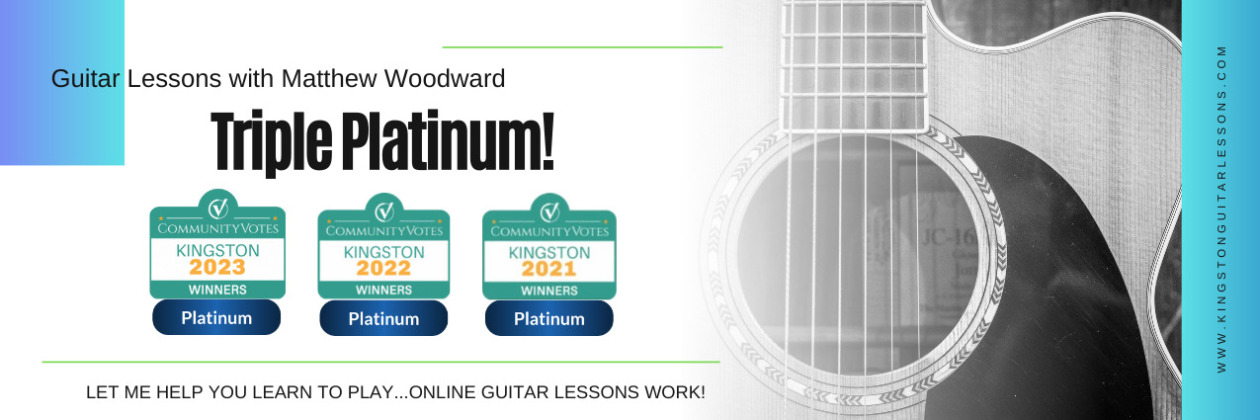Although your guitar can be in tune with itself, to be in tune with the rest of the world we must have a standard reference pitch with which we can make sure that at least one of our strings is in tune. Once one string is in tune, the tuning of the others can be derived from it.

In the not-so-distant past folks would have to tune their guitars by ear to what they thought was right, to the nearest available piano, or to any other instrument that was considered reliable. Another method employed was to tune a string by comparing its pitch to a note produced by a tuning fork, which produces its sound when it is struck against your knee or heel and is then held by its stem against the guitar. You compare the sound of the string you wish to tune to the pitch of the tuning fork and try to match it exactly by ear.

The first tuning device I used was a pitch pipe (sort of a six-note harmonica). The six pipes play the notes E, A, D, G, B and (high) E. You blow a note on the pipe and tune the pitch of the string that matches that pipe until it sounds right, doing this for each string. Convenient, cheap, but not very accurate. If I misplaced my pitch pipe I would put a familiar recording on the turntable (perhaps a song that I knew featured an obvious A, E or D note) and tune my guitar by ear to that. Then I would walk 25 miles uphill through driving snow to get to rehearsal.
When I first started playing in bands all the touring acts carried electronic stroboscopic tuners. Strobe tuners have been around since the 1930’s, and were primarily used by piano tuners.

Although highly accurate, they were big, heavy, expensive, and sensitive to being knocked around in the back of a van.

I was amazed when the Korg GT-6 portable guitar tuner first came out in 1979 – small, affordable and made specifically for guitarists. I ran to my local music store and bought one right away. Revolutionary!
Today, electronic battery-operated, hands-free guitar tuners are inexpensive, highly accurate, easy to use, and available at all music stores. You simply hold the microphone (built into the tuner) up close to the soundhole of an acoustic guitar, or plug an electric guitar directly into the device and then tune up by watching a meter with a needle (most accurate) or an LED display of some sort. Some tuners clip on to the headstock of your guitar and work by sensing the vibrations of the instrument. “Stomp box” foot pedal tuner designs are indispensable for electric players onstage.
As with most things today, the amount you spend determines the quality of construction materials, durability, accuracy and flexibility of the tuner. Cheap tuners tend to break easily, or will go out of calibration if dropped. Pricier “chromatic” tuners will allow you to tune to any note, not just the six notes used in “standard” tuning, and are generally worth the extra cash. There are also tuning programs available as freeware on the internet.
Although electronic tuners are amazing, you don’t want to become totally dependent on them. Almost all of the “old school” methods of tuning required a player to use their ears to listen to a reference pitch while attempting to match the tuning of their string to that reference. 
Listening is GOOD for you, and helps train your ear to minute changes in pitch. It’s important to know exactly what to listen for. When two notes that are slightly out of tune with each other are played together, their combined frequencies produce an effect known as “destructive interference”. We hear this as a regularly occurring drop in the volume of the two notes, referred to as “beating”. Remember that it is the combination of two almost-in-tune notes that causes this effect – both pitches must be ringing in order to hear this beating effect.
The speed of the beating effect depends upon how close in frequency the notes being compared are. If the two notes played are very close in pitch, the beating will sound like a slow pulsing wave. If the notes are far apart in frequency, the beating will be rapid, producing a fast, warbling sound. Once a player can hear this, they begin to tighten or loosen a string, listening carefully to the speed of the beating until they are able to make the effect stop completely. When the two notes are perfectly in tune with each other the beating sound disappears. You are good to go!
Let that be a lesson to you. ![]()
If you liked it, please feel free to share my post with your friends.
© 2014 Matthew Woodward


